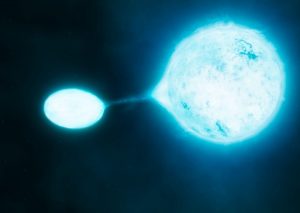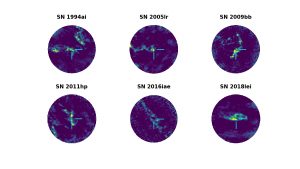
Credit: ESO/M. Kornmesser/S.E. de Mink
Binary stars exploding as supernovae type Ic
Astronomers from the Astronomical Observatory Institute of the Adam Mickiewicz University in Poznań (Poland) have solved the mystery of enigmatic cosmic explosions known as supernovae type Ic. During these very energetic explosions we do not see hydrogen or helium, so it was suggested in the past that they were very massive stars (20-30 times more massive than our Sun) which remove their hydrogen and helium envelope before they explode.
The team used the largest telescope array in the world, the Atacama Large Millimeter Array, located at 5000 m of elevation in the north of Chile. They observed carbon monoxide line emission which was used to measure the amount of molecular hydrogen, the fuel out of which stars form, at the positions of various supernova explosions. Molecular hydrogen clouds survive around 20 million years, so the more hydrogen we find at a supernova position, the shorter life the exploding star has lived.
The observations revealed similar amounts of hydrogen at the positions of studied supernovae type Ic and supernova type II, which are known to be explosions of stars 8-15 times more massive than the Sun. Hence, stars exploding as type Ic supernovae have similar lifetimes, so they have similar masses and are therefore not 
Credit: Martín Solar (AMU)
The fact that supernovae type Ic are binary systems of less massive stars is essential for our understanding of how elements are formed in our Universe and how galaxies evolve.
The publication in Nature Communications is available here.
2024-09-03, MS, MM

